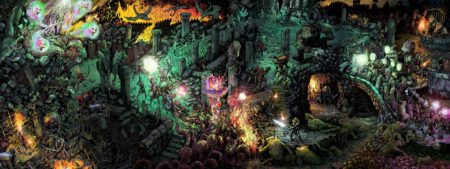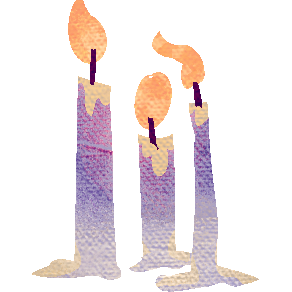
TLDR: It was great! Highly recommended. Learn more about Dungeon World here!
The first thing I asked the kids was whether they were familiar with Dungeons and Dragons, and not a single one of them raised their hand. After digging around pop cultural references with them, the closest thing they could think of was the game Dungeons, Dungeons and More Dungeons, from Gravity Falls. I figured that was a fine starting point.
When I was choosing what system to use with the kids, I had a few things to weigh – first of all, what kind of game play would be fun for kids both 9 and 12 years old (or 8 or 13, as sometimes we have kids right on the cusp sneak in); secondly, what would be a reasonable game to expect three new GMs to learn in a few weeks, especially when their own gaming experience was varied; thirdly, what game was flexible enough to be edited and adjusted and warped to fit the setting I was creating based on the Shahnameh. Finally, we had a fixed budget for the program, and I couldn’t expect them to order a whole suite of $40 players’ guides, dungeon masters’ guides, bestiaries or such. We needed something lightweight, compact and flexible, and Dungeon World turned out to be just the trick!
One of the key aspects of Dungeon World that I liked was that the core mechanic of rolling 2d6 was weighted so that the most common result of an unmodified die roll (7) is neither a pure failure nor a pure success, but is a grey result, where the players might get half of the result they were looking for, or achieve what they want but at a higher cost than expected. It’s a zone where the GM is given license to turn the tables or change the situation on the characters, and it’s a really fun tool to keep the game moving and surprise the players. The other benefit of it is that the player characters don’t outright fail on their rolls as much as they would in a classic D20 system, which I think really helped the younger kids stay motivated and not get too frustrated.
Initially I had planned to simply provide some pre-generated characters for the kids, but Jason Lutes reminded me of how much greater the investment is when they’ve spent time creating their own, and I ended up using simplified character sheets designed by Peter J. for one-shot use. The character creation process still took over an hour, but we were able to play the game on the same day, which was my goal, and the kids definitely got excited about what kind of character they ended up playing. The nice thing about the simplified sheets Peter made was that they helped kids prioritise their stats even before they knew the needs of their class, so that we didn’t end up with uncharismatic bards, weak fighters or clumsy rogues. I still had to edit and modify the character sheets before we started, to make sure they were convincingly set in the world of the Shahnameh, but I’ll get into that process in a later post.
One of the key aspects of Dungeon World play is the collaboration between players and GM. In essence, the GM is constantly asking the players to contribute information about the world, and supplementing that information with important plot elements, traps, dangers, key NPCs and as such. I knew this would be fun for the kids, but what I hadn’t planned was how to teach it to them, and so for the first few sessions (we played 9 sessions in total over the week) it was a little slow getting interesting storytelling contributions from all of them. However, I think it was also the best way to get them from not taking the game seriously to understanding that their words had real in-world consequences. As an example, when asked what the unintended side effect of a magic spell was, one of my players sarcastically told me the nearby corpse of a monster they had just killed opened its eyes – and thus they ended up fighting a zombie version of it without a rest. Shortly after that, I stopped getting sarcastic responses and my group seemed more genuinely hooked on the story.
That core 2d6 mechanic I mentioned earlier continued to be key to my Dungeon World choice, as it is incredibly straightforward to design custom rules for specific scenarios. Any situation where you roll the dice in Dungeon World is called a Move, and moves are very predictably structured: roll 2d6, and add a relevant stat (Wisdom, Constitution, Strength, etc). If the result is 6 or under, it’s a failure – but the player gets experience points. If it’s 7-9, it’s neither a pure success or a pure failure. If it’s 10+, it’s a pure success. As a GM it’s easy to use this structure as a template for whatever kind of moves you need – great for when your players have decided to hold their breath and talk to mermaids, or pull any number of other stunts that might come up over the course of a campaign.
Overall Dungeon World was a flexible and straightforward system that encouraged storytelling, improvisation, and enabled a lot of customisation without swamping the GM or the players with complicated stats or ability categories. It was a clear choice and I’m happy to say we got great results!
Thanks for reading, and thanks to all my Patrons who make writing up these sorts of posts possible! Next week I’ll get into what, exactly, it was like to run a week long campaign with 9-12 year olds.

Leave a Reply